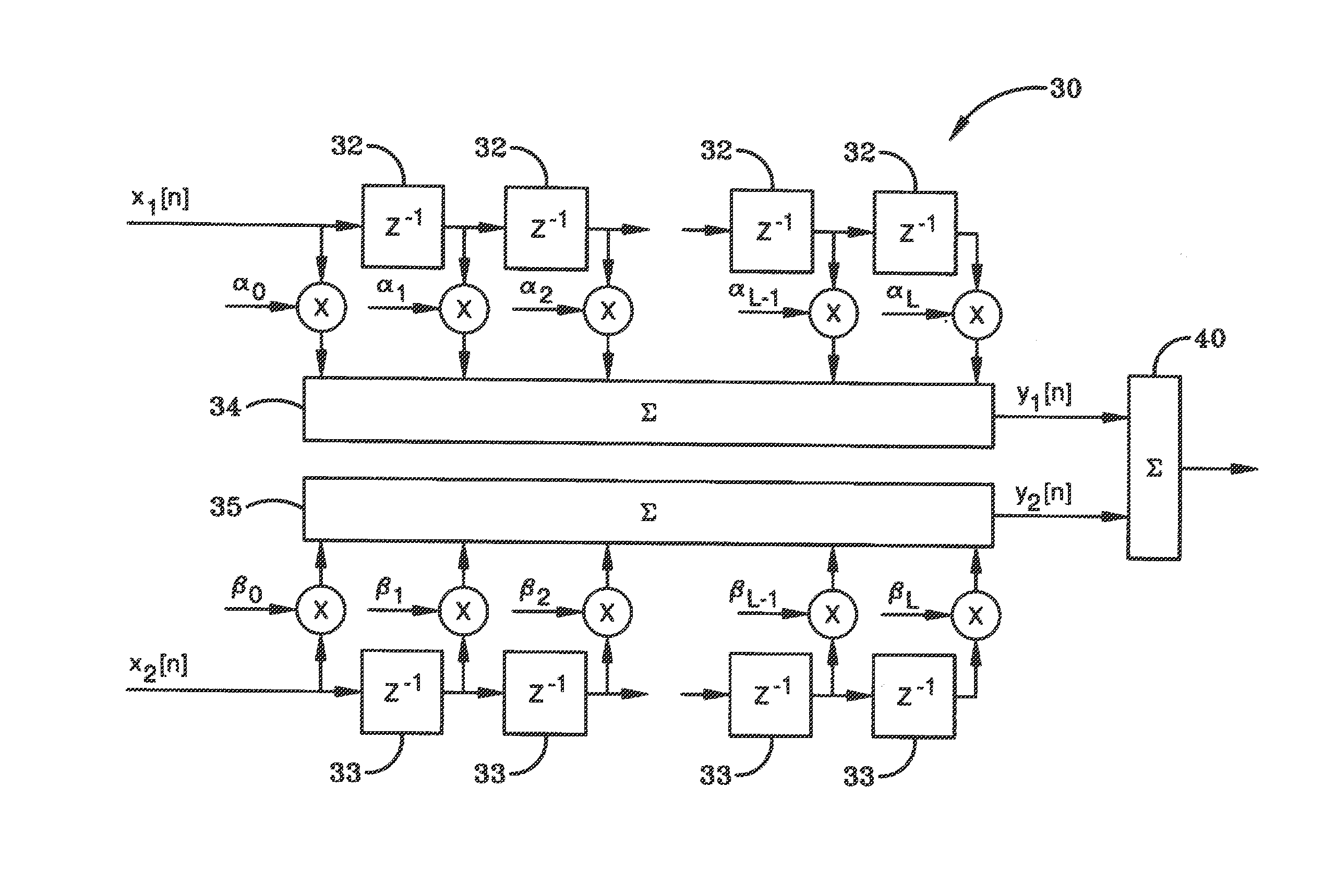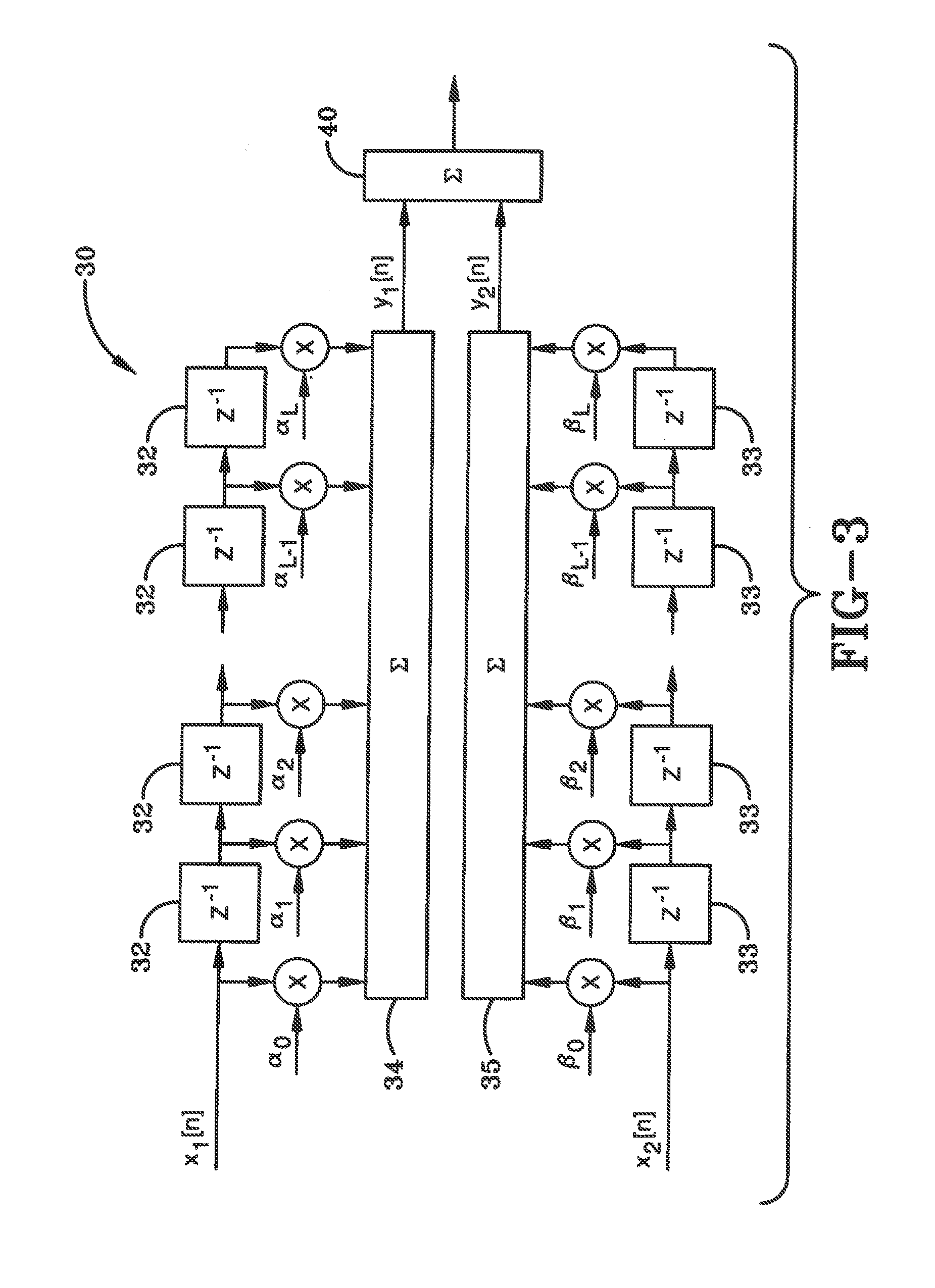System and algorithm for multipath mitigation
a multi-path mitigation and algorithm technology, applied in the field of wireless communication, can solve problems such as signal distortion and reduction of received signal energy
- Summary
- Abstract
- Description
- Claims
- Application Information
AI Technical Summary
Benefits of technology
Problems solved by technology
Method used
Image
Examples
Embodiment Construction
[0022]Before referring to specific figures below, the preferred embodiment of an algorithm to more accurately receive and detect multipath signals will be described. When there are multiple receiving antennas available for reception of the signal of interest there is an opportunity to realize a significant improvement in system performance by optimally combining the respective antenna outputs. It is customary to refer to the respective receiving antennas and corresponding sub-channels (propagation paths) by which energy reaches them as diversity “branches” in recognition of the fact that the impairment (fading or dispersion) on the different branches is usually uncorrelated from branch to branch, or at least not strongly correlated, resulting in a diversification of the signal quality that reduces the probability of a simultaneously poor signal condition at all branch outputs. More specifically, when the multiple antenna outputs exhibit distinct fading characteristics, as is usually...
PUM
 Login to View More
Login to View More Abstract
Description
Claims
Application Information
 Login to View More
Login to View More - R&D
- Intellectual Property
- Life Sciences
- Materials
- Tech Scout
- Unparalleled Data Quality
- Higher Quality Content
- 60% Fewer Hallucinations
Browse by: Latest US Patents, China's latest patents, Technical Efficacy Thesaurus, Application Domain, Technology Topic, Popular Technical Reports.
© 2025 PatSnap. All rights reserved.Legal|Privacy policy|Modern Slavery Act Transparency Statement|Sitemap|About US| Contact US: help@patsnap.com



